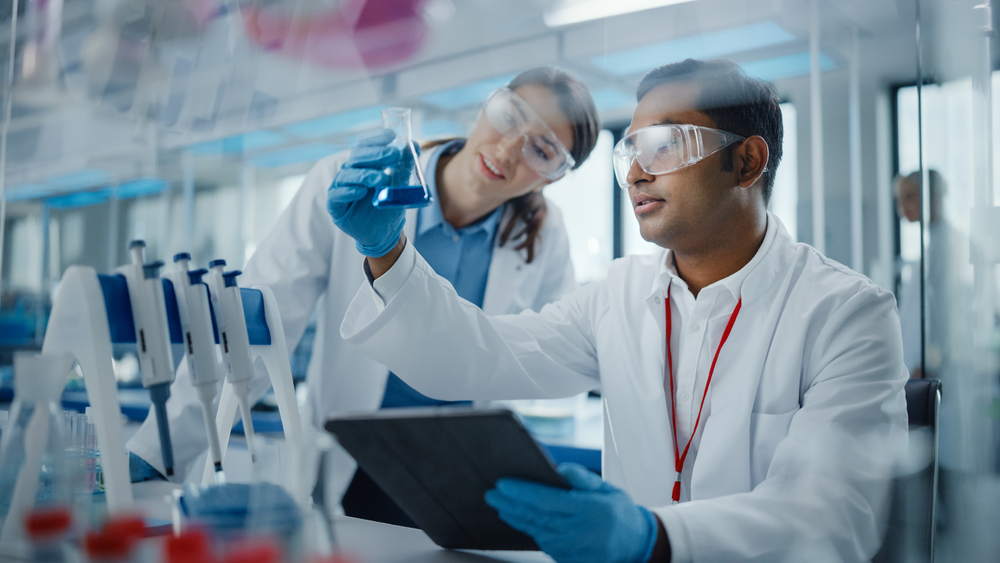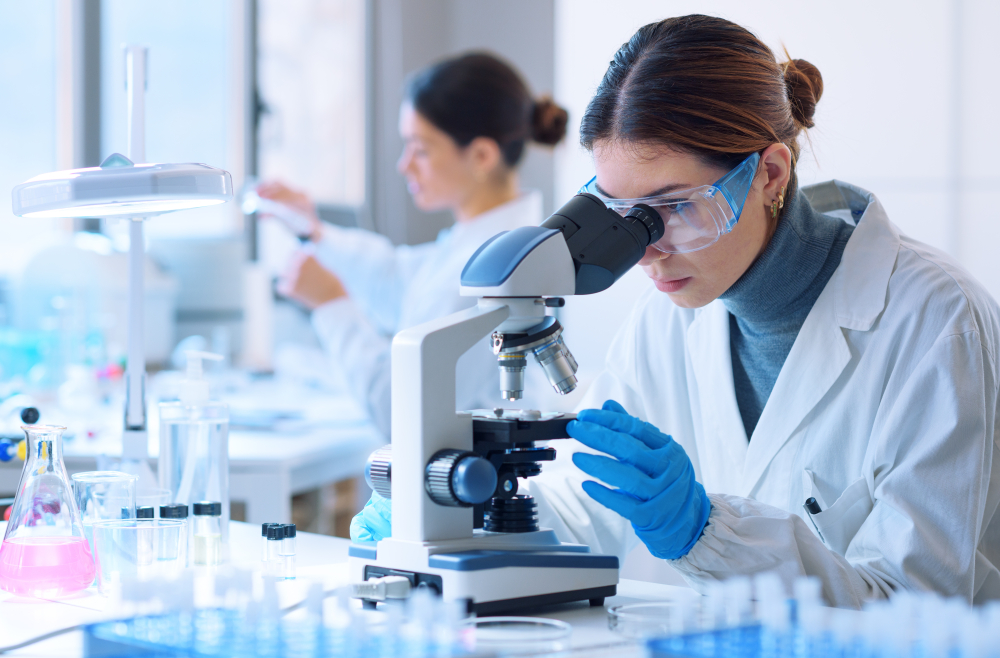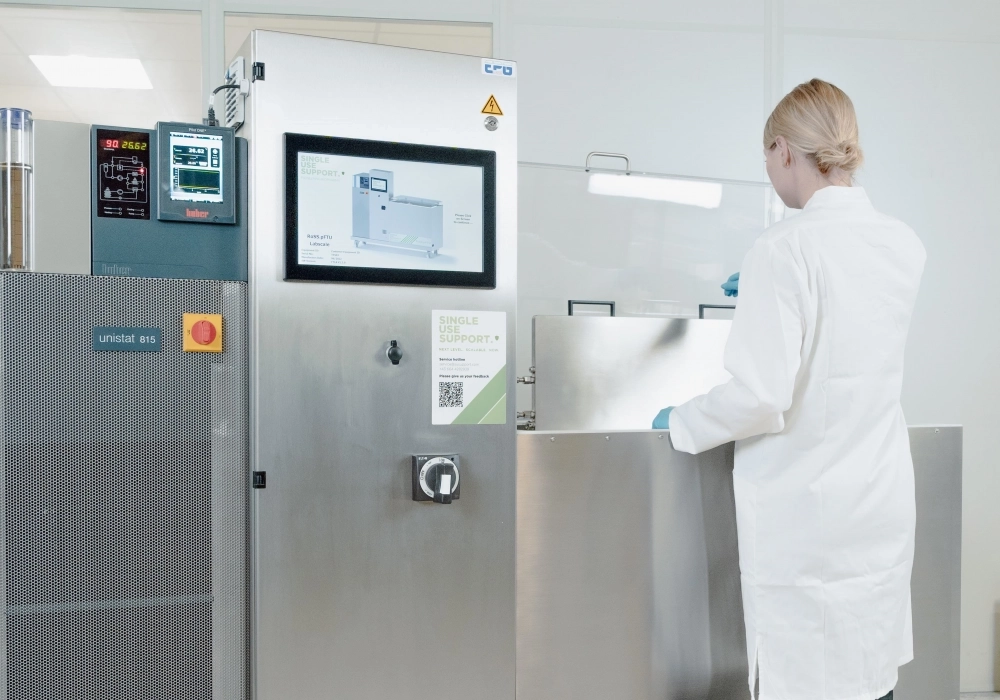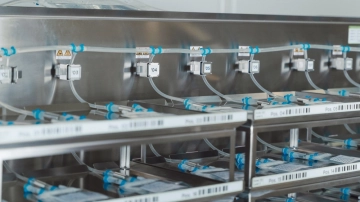The development process of biosimilars
Table of contents
ShowThe development process for biosimilars involves an extensive testing period in order to establish similarity to the reference biologic. To ensure that the drug doesn’t have unwanted side effects, there is a broad regulatory framework developers of biosimilars must adhere to.
In this article, we provide an introduction to biosimilars. We take a closer look at their history, the challenges involved in the development of biosimilars, and strategies for successful development and manufacturing practices.
Biosimilars – an overview
Biosimilars are biological products that are highly similar to an already approved reference biologic drug, also known as the originator biologic or reference product. They are developed to have a comparable tolerability, safety, and efficacy profile to the reference product, but are not exact copies. This is due to the inherent complexity of biological molecules and the variability that can arise during the manufacturing process of biosimilars.
Biosimilar approval follows a determined regulatory pathway. Biosimilar medicines undergo comprehensive comparative testing against the reference product, including analytical characterization, preclinical studies, and clinical trials. The goal of biosimilar development is to demonstrate no clinically meaningful differences in safety and effectiveness compared to the reference product.
Biosimilars offer the potential to increase patient access to biological therapies in fields like oncology and the treatment of immune diseases, while providing cost savings compared to the reference biologic drug after expiration of the biologic’s patent. They play a significant role in expanding treatment options and fostering competition in the biopharmaceutical market.
While the first biosimilar in Europe – Omnitrope – was approved in 2006 by the European Medicine Agency (EMA), the first biosimilar in the USA, named Zarxio (filgrastim-sndz), was approved by the Food and Drug Administration (FDA) in 2015. Because more patents for blockbuster innovator biologics from Europe were established earlier and ran out earlier, the European market for biosimilars is currently bigger than the U.S. market.
Interchangeable biosimilars are a category of their own, as they can be switched for the reference product at the pharmacy without consulting the prescribing healthcare professional first (pharmacy-level substitution) – rather like a generic drug given out instead of a brand-name drug. For this purpose, they have to fulfill additional regulatory requirements and are deemed “interchangeable” with the reference product in terms of safety by healthcare providers. 1 2 3 4 5 6

What is the development process of biosimilars?
As slight differences in the national regulatory frameworks concerning the life cycle development of biosimilars can occur, the following breakdown concentrates on the development process according to the standards set by the U.S. Food and Drug Administration (FDA).
Research and development
The development process starts with the selection of a reference biologic. This has to be a biologic drug that has already been approved by the FDA, with established safety and efficacy data. The chosen reference product serves as the benchmark for demonstrating similarity throughout the biosimilar development process.
In the following, researchers need to find out the amino acid sequence of the reference biologic protein through characterization, in order to confirm equal immunogenicity and efficacy between both biotherapeutic products.
The next steps are cell line and expression system development. This may involve selecting the same cell line used in manufacturing of the biologic to closely mimic its production process. After weeks of cell growth, the mixture is purified and proteins can be harvested.
Testing and clinical trials of biosimilars
Biosimilar development involves extensive analytical testing to demonstrate similarity to the reference product in terms of structure, function, and quality attributes. Analytical techniques such as mass spectrometry, chromatography, and spectroscopy are used to compare critical parameters between the biosimilar and the reference product in non-clinical and clinical assays.
The testing process is heading towards a totality of evidence, meaning the establishment of biosimilarity instead of an individual proof of the product’s safety and efficacy. During testing, preclinical studies are mostly performed in animal models to assess the pharmacokinetics, pharmacology, pharmacodynamics, and toxicity of the biosimilar.
After that, the proposed biosimilar enters the stage of clinical trials, where safety, efficacy, and tolerability are demonstrated. Furthermore, biologics are assessed for immunogenicity. The clinical trials typically include comparative pharmacokinetic and pharmacodynamic studies, as well as comparative clinical efficacy and safety studies in patients.
FDA approval and market surveillance of biosimilars
Once the biosimilar candidate has demonstrated similarity to the reference product in analytical and clinical studies, a comprehensive regulatory submission is prepared for review by the FDA. The submission includes data on the biosimilar's manufacturing process, analytical characterization, preclinical and clinical studies, and proposed labeling.
After approval, biosimilars are subject to post-marketing surveillance to monitor their safety and effectiveness in clinical practice. This includes pharmacovigilance activities to detect any unexpected adverse events or differences in clinical outcomes compared to the reference product’s formulation. Moreover, pharmacovigilance aids in further improving the product and its safety, if need be.7 8 9 10 11
Challenges involved in the development process of biosimilars
There are several challenges manufacturers have to face when it comes to the development process of biosimilars. These are often connected to the extensive regulatory framework surrounding the process, as well as ensuring product purity and up-scaling.
Demonstrating biosimilarity
Demonstrating biosimilarity is difficult due to the inherent complexity of biological molecules, variability in the manufacturing process, and the need to establish equivalence in terms of structure, quality, and clinical performance.
Addressing these challenges requires a multidisciplinary approach, including advanced analytical techniques, robust manufacturing processes, and well-designed clinical studies, to ensure the safety, efficacy, and tolerability of biosimilars.
Product purity
Compared to smaller molecule drugs, drug development from living cells that is involved in the production of monoclonal antibodies, for instance, is more complex and bears more risks. While the development process of biosimilars is centered around similarity to an already established biologic medicine, obstacles like contamination risks and product loss are just as relevant.
New advancements in biotechnology can help manufacturers to minimize these risks that are often caused by human errors. Therefore, Single Use Support has designed a fully automated, closed fluid management system for biosimilars and biologics: RoSS.FILL aids in state-of-the-art manufacturing practices, helping to streamline the whole process of handling drug substances. Consequently, this will lead to lower costs in biomanufacturing while maximizing product quality.12 13

Scalability
Maintaining product quality and consistency can be challenging when it comes to scale-up the volume in biosimilar manufacturing. This is especially true when changing to larger batch volumes or primary packagings, as alterations in their handling must be taken into account.
However, meeting the requirements set by regulatory agencies for biosimilar manufacturing at scale is essential to ensure product safety, efficacy, and quality. These standards have to be applied to the manufacturing processes, facility design, and quality control measures.
Scaling up production while complying with regulatory expectations requires careful planning, documentation, and validation of manufacturing processes and systems. A particular focus must be put on the transferability of individual technologies: Having to replace complex manufacturing systems in order to scale-up production capacities can be costly.
By investing in modular and scalable solutions, on the other hand, saving time and costs from development to manufacturing becomes possible. The production can move easily between different scales, while even the interface may remain the same, allowing to easily transfer freezing protocols.
Regulatory requirements for biosimilars
Just like the manufacturing of biologics, biosimilar production has to comply with current good manufacturing practices (cGMP) as set by national health authorities, which orient themselves on the guidelines defined by the World Health Organization (WHO). As the organisms involved in the development and manufacturing of biosimilars are highly sensitive substances, this regulatory framework ensures that quality and safety of biological drugs stay consistent.
To comply with cGMPs means that manufacturers have to establish quality management systems into the process, ensure the sterility of raw materials and establish a consistent operating procedure with state-of-the-art technology. Further, they have to make sure to document the production process thoroughly and that laboratory standards are up-to-date to obtain reliable clinical data.14

Supporting manufacturers of biosimilars with single-use technology
The regulations surrounding the production process of biosimilars can be challenging for manufacturers. New advances in biotech, such as the implementation of single-use technologies, can help manufacturers of biosimilars to streamline the production process, while meeting demands more easily.
Single Use Support provides fully automated process solutions that minimize the risk for contamination and human errors to prevent product loss, relieving workers from strenuous tasks. The aseptic filling platform RoSS.FILL requires only a minimum of human intervention and is highly scalable. In addition, it enables an aseptically closed system minimizing further the risk of contamination.
The RoSS.pFTU automated plate freezing platform is designed to freeze and thaw single-use bags or containers homogeneously and in a controlled manner. It is able to reach ultra-low temperatures with full control over freezing rates, in accordance with the demands of the respective products.
During transport and transfer between workstations, single-use bags can be stored in the RoSS® shell, which are protective and space-saving secondary packagings. These prevent damage and product loss and ensure both integrity of the cryobag and compliance with quality standards from development to upscaling of biosimilar drug products.
- Biosimilars: Review of current applications, obstacles, and their future in medicine, http://dx.doi.org/10.12998/wjcc.v6.i8.161, Published 2018-08-16
- Development and Regulation of Biosimilars: Current Status and Future Challenges, http://dx.doi.org/10.1007/s40259-013-0020-y, Published 2013-04-03
- The Concept of Biosimilars: From Characterization to Evolution—A Narrative Review, http://dx.doi.org/10.1634/theoncologist.2017-0126, Published 2017-12-28
- Future Evolution of Biosimilar Development by Application of Current Science and Available Evidence: The Developer’s Perspective, http://dx.doi.org/10.1007/s40259-023-00619-0, Published 2023-08-05
- Biosimilar and interchangeable: Inseparable scientific concepts?, http://dx.doi.org/10.1111/bcp.14089, Published 2019-09-05
- Biosimilar and Interchangeable Biologics: More Treatment Choices., https://www.fda.gov/consumers/consumer-updates/biosimilar-and-interchangeable-biologics-more-treatment-choices, Published 08/2023
- Future Evolution of Biosimilar Development by Application of Current Science and Available Evidence: The Developer’s Perspective, http://dx.doi.org/10.1007/s40259-023-00619-0, Published 2023-08-05
- How Similar Are Biosimilars? What Do Clinicians Need to Know About Biosimilar and Follow-On Insulins?, http://dx.doi.org/10.2337/cd16-0072, Published 2017-10-12
- The ‘totality-of-the-evidence’ approach in the development of PF-06438179/GP1111, an infliximab biosimilar, and in support of its use in all indications of the reference product, http://dx.doi.org/10.1177/1756284819852535, Published 2019-06-13
- Development of biosimilars, http://dx.doi.org/10.1016/j.semarthrit.2016.01.002, Published 2016-01-21
- Review and approval, https://www.fda.gov/drugs/biosimilars/review-and-approval, Published 22.04.2024
- An Overview of Biosimilars—Development, Quality, Regulatory Issues, and Management in Healthcare, http://dx.doi.org/10.3390/ph17020235, Published 2024-02-12
- Biosimilars: Key regulatory considerations and similarity assessment tools, http://dx.doi.org/10.1002/bit.26438, Published 2017-08-26
- “Good manufacturing practices”. World Health Organization. , https://www.who.int/teams/health-product-policy-and-standards/standards-and-specifications/gmp, Published 22.04.2024








